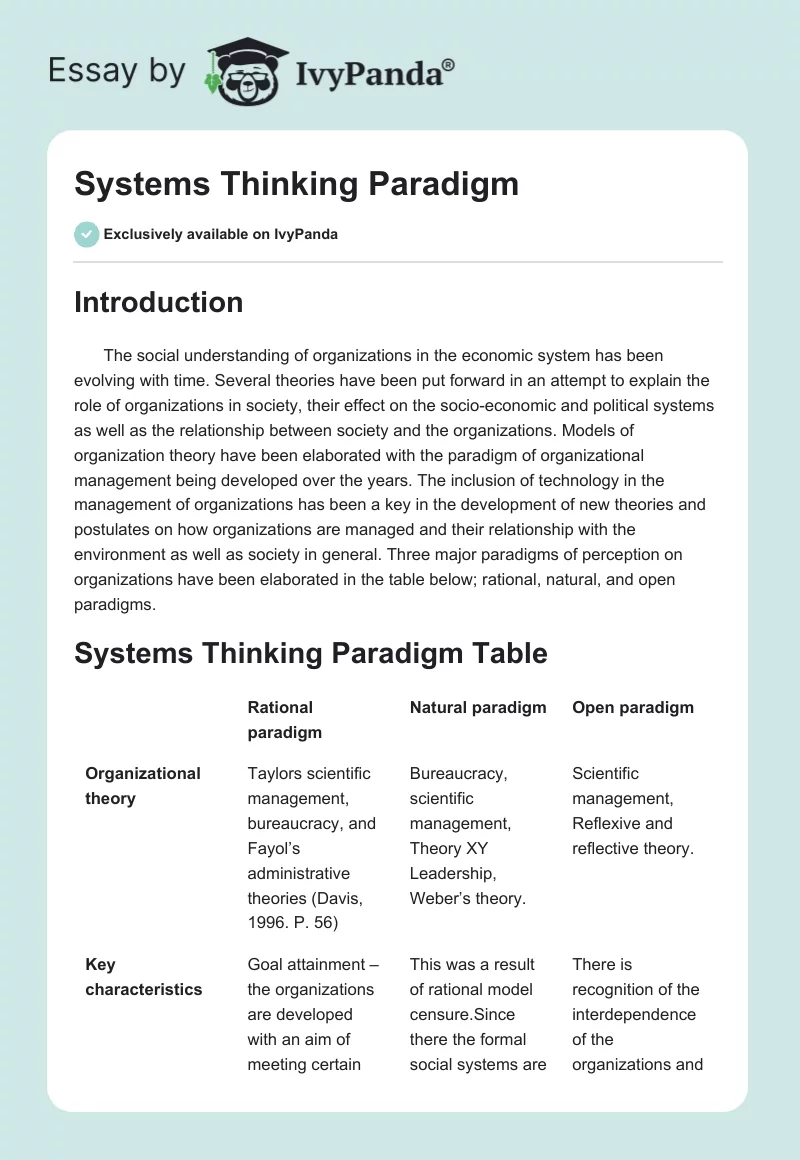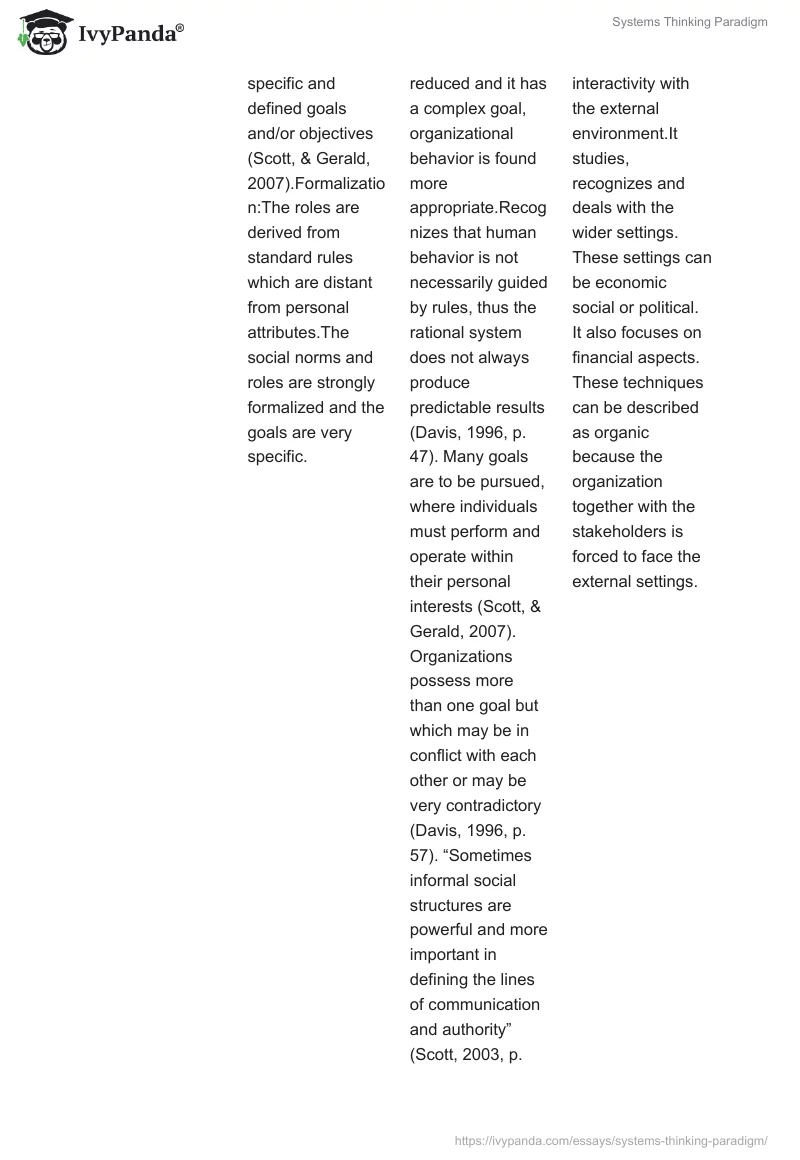Introduction
The social understanding of organizations in the economic system has been evolving with time. Several theories have been put forward in an attempt to explain the role of organizations in society, their effect on the socio-economic and political systems as well as the relationship between society and the organizations. Models of organization theory have been elaborated with the paradigm of organizational management being developed over the years. The inclusion of technology in the management of organizations has been a key in the development of new theories and postulates on how organizations are managed and their relationship with the environment as well as society in general. Three major paradigms of perception on organizations have been elaborated in the table below; rational, natural, and open paradigms.
Systems Thinking Paradigm Table
Summary
Considering the rational paradigm, it is possible to observe the roles of bureaucracy and other theories described above. This gives systematic instructions to the employees and further requires clear authority for each of the transactions carried out in the bank. This is a form of bureaucracy (Scott, & Gerald, 2007, p. 54). Furthermore, the University of Phoenix is a typical organization that exhibits scientific management (University of Phoenix, 2010, p. 43-55). The natural paradigm system allows new ideas to be integrated into the old system of organizational management (Jones, 2004, p. 92). For instance, Microsoft Corporation allows those with greater power have the roles of decision making on the growth and allotment of funds (Dionne, Yammarino, Atwater, & Spangler, 2004, p. 176). In addition, there is the domination of the upper management, but which can be challenged in decision making, layoff as well as outsourcing (Bruno & Jordan, 2002, p. 110). The open systems allow e-commerce firms to meet social requirements through emerging and social mechanization technologies. The interaction of the organization with the environment, competitors, and clients is enhanced through technology (Dionne, Yammarino, Atwater, & Spangler, 2004, p. 186). The systematic analysis of the three traditional paradigms shows that their applicability exists even in the modern world, where management and organizational leadership is defined by improved and increased use of technology. The natural systems were mainly developed to address the uniqueness of human resource needs (Scott, 2003, p. 67).
References
- Bruno, R., & Jordan, L. (2002). Lean Production and the discourse of dissent: Radicalizing the shop floor at Mitsubishi motors. Working USA, 6 (1), 108-127.
- Davis, C. R. (1996). The administrative rational model and public organization theory. Administration & Society, 28 (1), 39-60.
- Dionne, S. D., Yammarino, F. J., Atwater, L. E., & Spangler, W. D. (2004). Transformational leadership and team performance. Journal of Organizational Change Management, 17 (2), 177-193.
- Jones, G. R. (2004). Organizational theory, design, and change. Upper Saddle River, NJ: Prentice Hall.
- Scott, W. R., & Gerald F. D. (2007). Organizations and Organizing: Rational, Natural, and Open Systems Perspectives. Upper Saddle River, NJ: Prentice Hall.
- Scott, W.R. (2003). Organizations: rational, natural, and open systems. Upper Saddle River, NJ: Prentice Hall.
- University of Phoenix. (2010). Faculty handbook 2009-2010. Phoenix, AZ: University of Phoenix Press.


